https://spectrum.ieee.org/automaton/robotics/drones/tiny-drones-team-up-to-open-doorsHaving tiny drones that can explore cramped spaces and still exert large forces upon their surroundings opens many new possibilities for search-and-rescue applications in either civilian or military scenarios. For example, Estrada suggested that such drones could be a portable tool for first responders or military personnel to deploy sensors or transport medical supplies to a person stuck in a remote location.
In one of the team’s experiments, a FlyCroTug drone clung to an overhang as it pulled up a battery-powered camera to perform inspections of a collapsed building site at a military training facility outside of Geneva, Switzerland.
A second door-opening scenario required teamwork between two FlyCroTug drones. The first drone grabbed the door handle with a special grappling attachment and then anchored itself to the smooth glass door. The second drone slipped a hook under the door and then latched onto the nearby carpet to pull the door open, once the handle had been turned.
Install the app
How to install the app on iOS
Follow along with the video below to see how to install our site as a web app on your home screen.
Note: This feature may not be available in some browsers.
You are using an out of date browser. It may not display this or other websites correctly.
You should upgrade or use an alternative browser.
You should upgrade or use an alternative browser.
UAV / UCAV / LAR (robotit) Uutiset ja jutut
- Viestiketjun aloittaja Raveni
- Aloitus PVM
CH-7 HALE stealth drone specifications Length 10m Wingspan 22m MTOW 13000kg Cruising altitude 10~13km Cruising speed 0.5~0.6Ma Maximum speed 0.75Ma
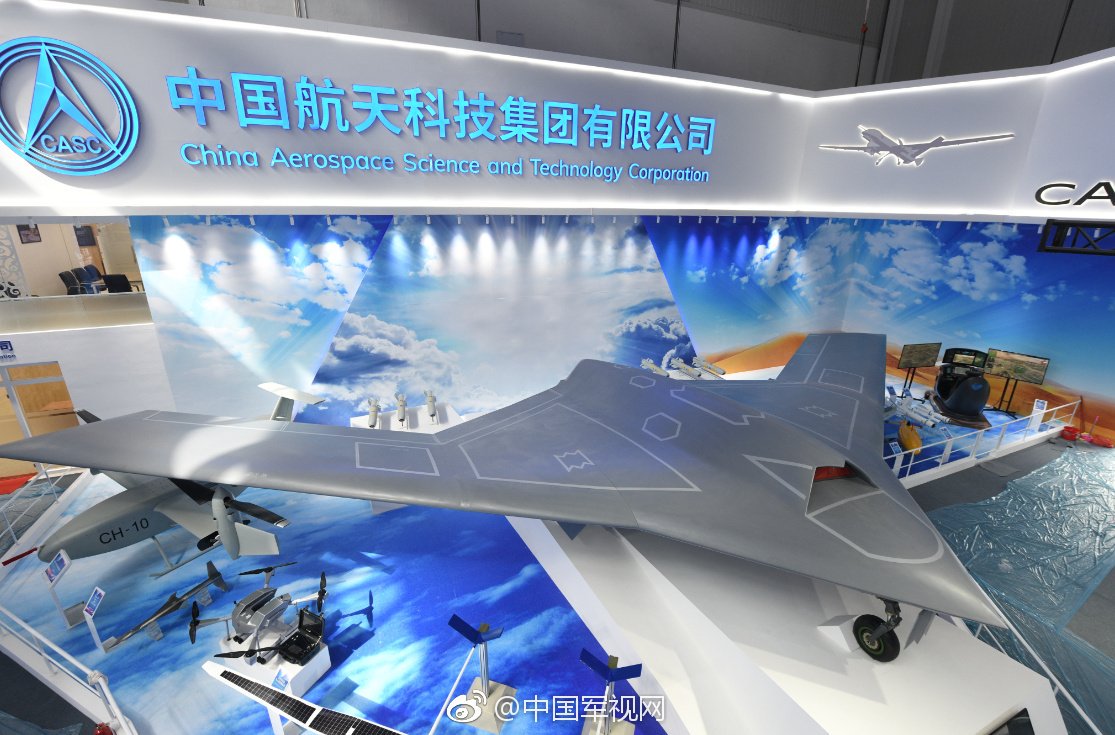
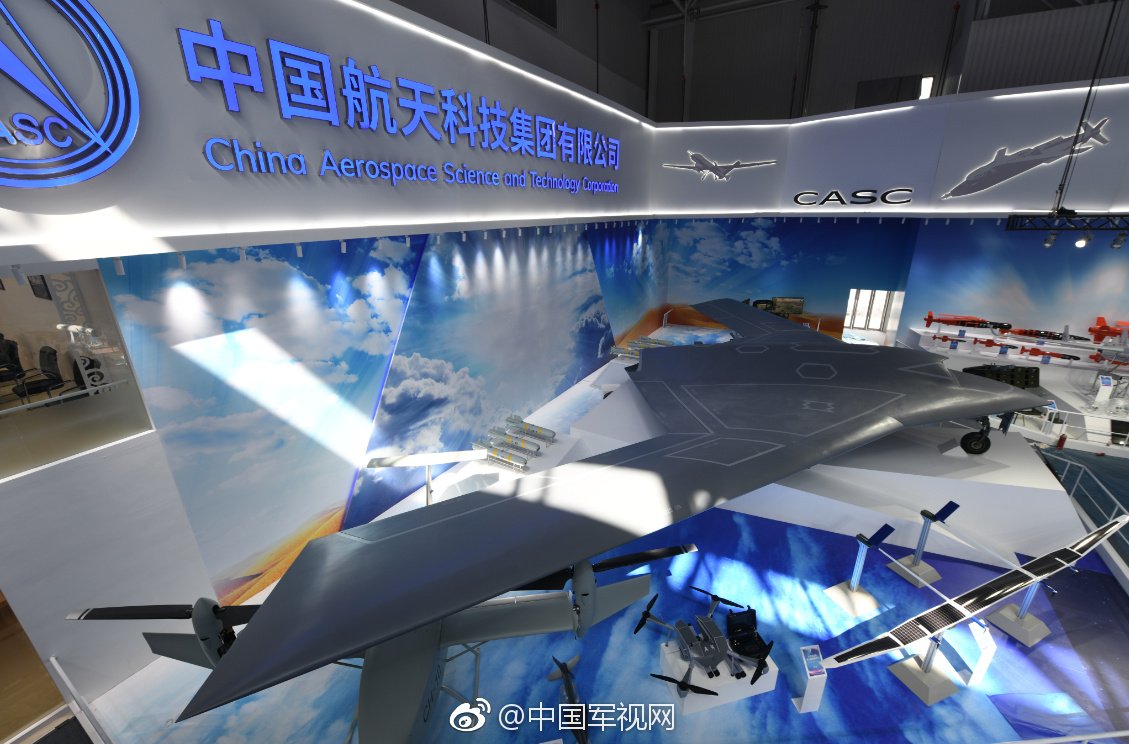
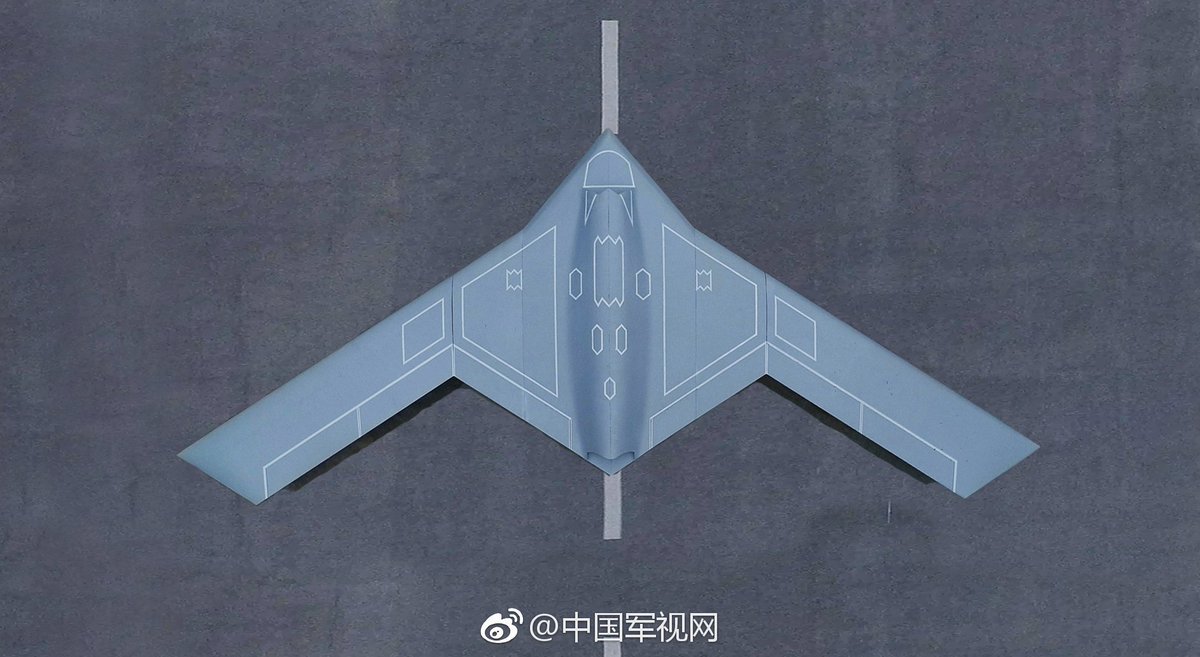
CASIC Tianying/Sky Eagle flying wing UAV, MTOW 3000kg, can be used to infiltrate or take close-in recon of important targets in a high threat environment.
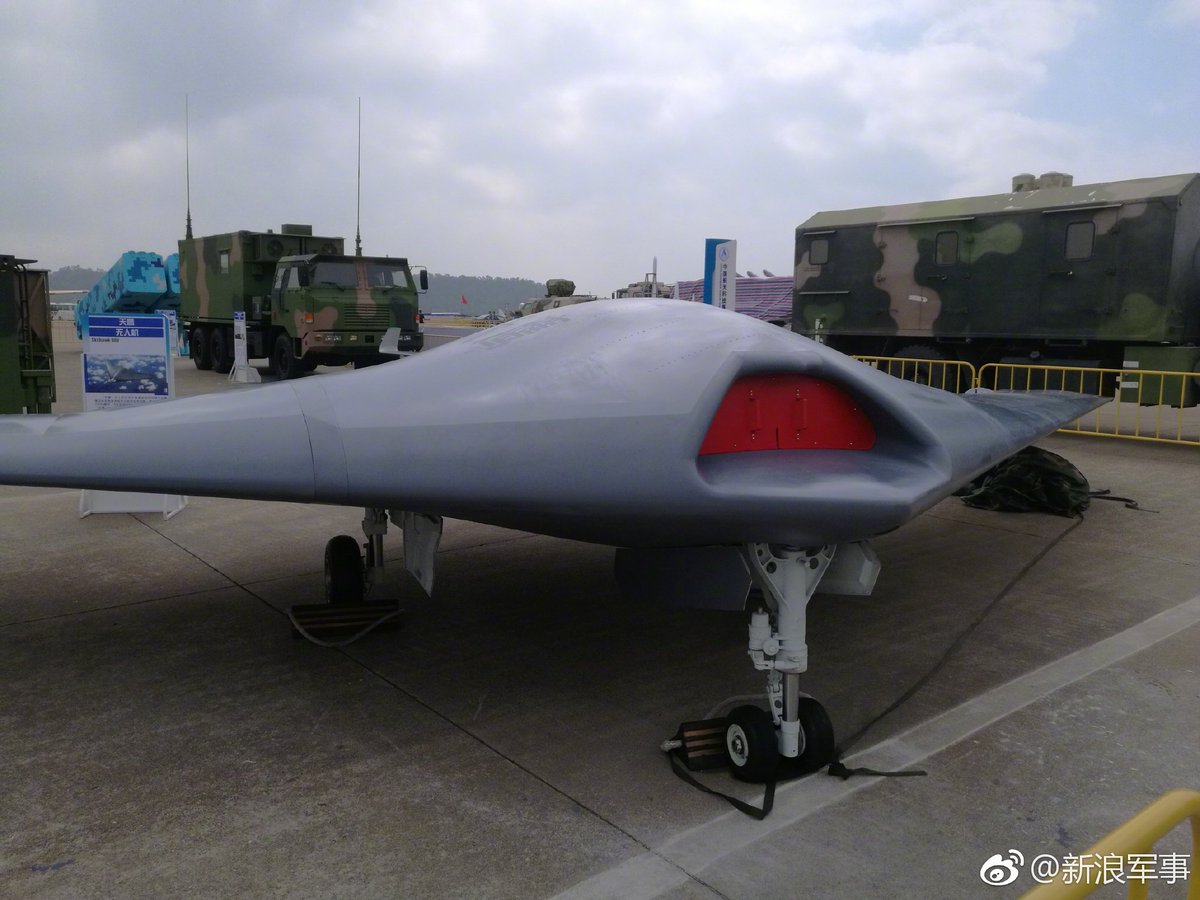
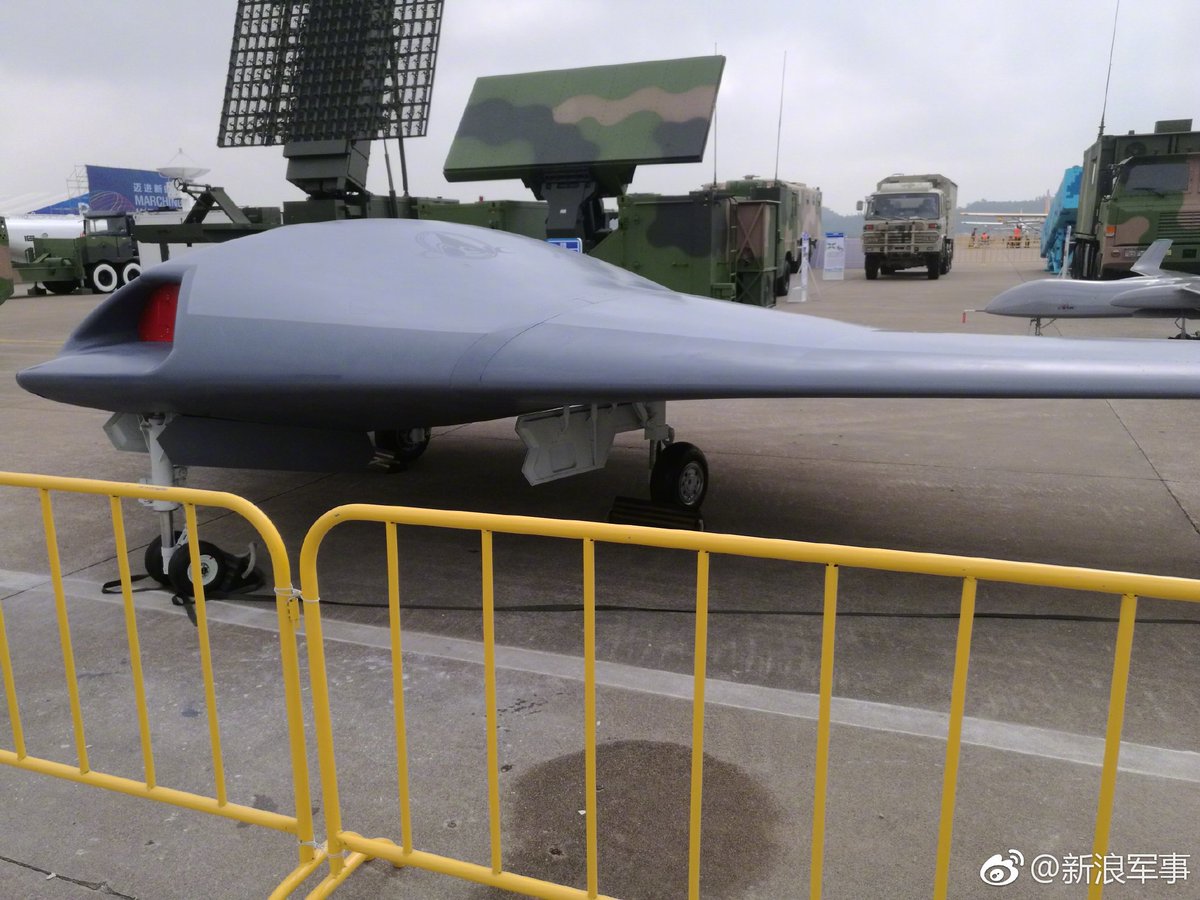
Golden Eagle CR500 Recon UAV Unit of PLZ52 155mm SPH System.
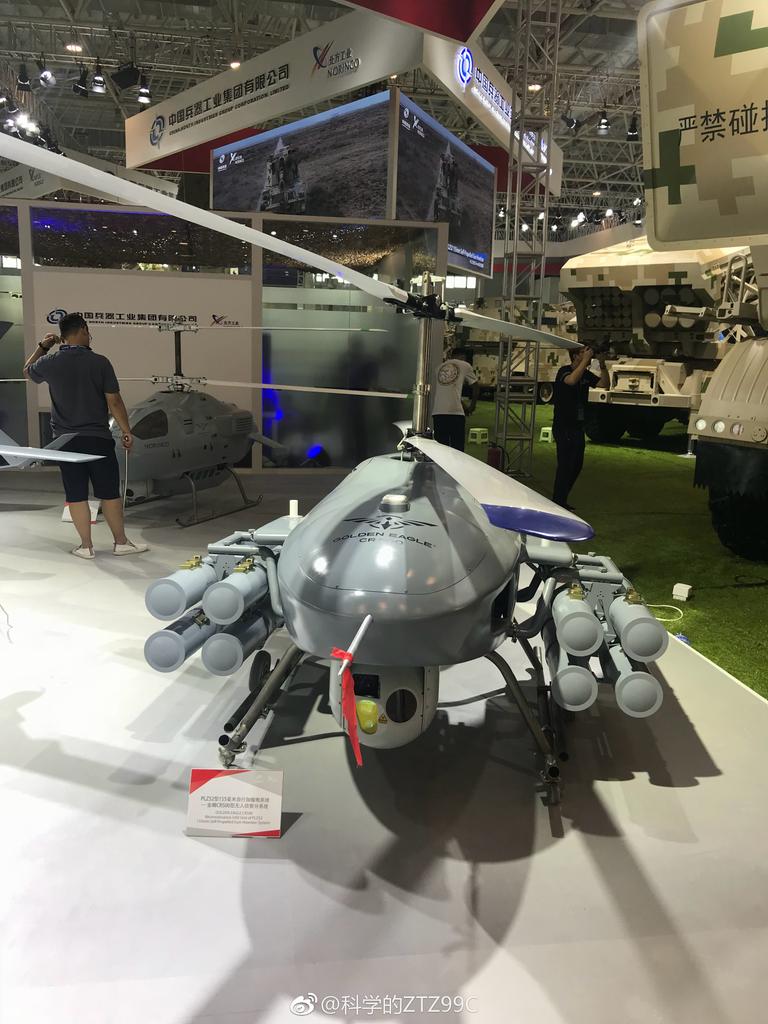
UAV kuljetuskone.

Toinen samanlainen.
Tengeon Tech unveiled a cargo drone concept featuring 42m wingspan, 8 engines. can carry 20 ton payload.


https://warisboring.com/iraqs-chinese-made-killer-drones-are-actually-pretty-good/
CH-4 käytettiin myös houthi johtajan salamurhaamiseen.
https://foreignpolicy.com/2018/04/2...nese-made-drone-is-changing-the-war-in-yemen/
On Feb. 12th, 2018, the Iraqi ministry of defense released a video depicting its Chinese-made CH-4B armed unmanned aerial vehicles. The brief report underscores the type’s success in Iraqi service.The video claims that the CH-4B drones have executed most of their attack and reconnaissance missions in northwest Iraq. Since their entry into operational service, they have performed no fewer than 260 air strikes against Islamic State targets, with a success rate close to 100 percent.
CH-4 käytettiin myös houthi johtajan salamurhaamiseen.
https://foreignpolicy.com/2018/04/2...nese-made-drone-is-changing-the-war-in-yemen/
Leaderwolf
Respected Leader
Mikä tämä Counter-UAV on?
Kustaanmiekka
Kenraali
Melkoisia kameroita nuo hyperspektrikamerat jos niillä voidaan ilmasta käsin havaita puissa olevat tuholaishyönteisetkin.
Kun hyperspektrikameroita alkaa tulemaan sotilaskäyttösiin droheihin ja lennokeihin, niin on siinä haastetta kerrakseen, että kuinka niiltä suojaudutaan ja kuinka niitä hämätään/häiritään.
https://yle.fi/uutiset/3-10533488
Drone lentää metsään ja mittaa hetkessä sen jokaisen puun – havaitsee nopeasti myös tuholaiset
Kevyesti liikkuvat dronet eli kevyet kopterit ovat vauhdilla tulossa metsäammattilaisten työkaluksi.
Metsänomistaja näkee virtuaalikuvassa senkin, miten hakkuu muuttaa maisemaa.
Tarkasti ja ketterästi kuvaava drone on helpottamassa metsänhoitoa ja inventointia.
Se mittaa hetkessä jokaisen puun pituutta ja paksuutta myöten.
Tarkkuuden parantumisen lisäksi dronen käytön uskotaan laskevan inventoinnin kustannuksia.
Tänä vuonna Metsä Group tekee pilottiyritysten kanssa drone-metsäsuunnitelmia Suomessa 4 000 hehtaarin alalle. Ensimmäiset valmistuvat joulun tienoilla.
– Drone-inventointi on yleisessä käytössä ehkä jo ensi vuonna, arvioi jäsenpalvelujohtaja Juha Jumppanen Metsä Groupista.
Digitalisoituva metsänhoito on tuomassa metsänomistajalle uuden palvelun, virtuaalisen metsän.
Innovaatio näyttää metsän nykytilan sekä visuaalisen näkymän hakkuun jälkeen.
Nähtävillä on myös taimikko kasvun jälkeen.
Virtuaalinen metsä myös laskee, kuinka paljon metsän käsittely omistajalleen tuottaa.
Juha Jumppasen mukaan tämä on erityisen hyvä palvelu esimerkiksi niille, joille omistusmetsä ei ole tuttu ja sijaitsee kaukana kotoa.
Drone haistaa tuholaiset
Dronea voidaan käyttää myös hyperspektrikuvantamiseen. Tällä menetelmällä voidaan esimerkiksi havaita metsien tuholaisia.
VTT:n verkkosivuilla kerrotaan, että hyperspektrikuvaus on äärimmäisen tarkka menetelmä, jolla voidaan havaita ja erotella eri materiaalit niiden kemiallisten ainesosien erilaisten valon heijastusominaisuuksien perusteella.
Suomessa on testattu esimerkiksi kaarnakuoriaisen esiintyvyyttä havupuissa.
Hyperspektritekniikalla voidaan havaita kaarnakuoriaiset ennen kuin ihmissilmä ne havaitsee.
Havupuuhun kiipeävä kaarnakuoriainen on huomaamaton, mutta se muuttaa puun virtauksia ja juuri sen uusi tekniikka havaitsee.
Nopeus on valttia, sillä kaarnakuoriainen tuhoaa tukkipuun varsin nopeasti kuitupuuksi tai polttopuuksi.
Kaarnakuoriainen on Suomessa vielä harvinainen, mutta ilmaston lämpeneminen tuo Suomeen uusia eläinlajeja ja
Suomen metsät voivat muuttua myös kaarnakuoriaiselle soveltuvammaksi mellastuskentäksi.
Drone palvelee miljardibisnestä
Digitalisaation saapuminen metsään tulee tarpeeseen, sillä inventoitavaa Suomen metsissä riittää.
Suomessa on noin 700 000 metsänomistajaa ja yksityismetsien metsäomaisuuden arvo on yli 40 miljardia euroa.
Yksityismetsät tuottavat metsänomistajille 1,7 miljardia euroa vuosittain.
Paremmalla metsänhoidolla yksityismetsien liiketulosta voidaan Metsä Groupin jäsenpalvelujohtajan Juha Jumppasen mukaan nostaa jopa 50 prosenttia.
Näissä talkoissa drone on hyvä apulainen.
Huipputeknologiaa taskussa
https://www.vtt.fi/vaikuttavuus/ref...-teknologialla-aiemmin-tarkemmin-ja-nopeammin
Hyperspektrikamerat, jotka suunniteltiin alkujaan teollisuus- ja tutkimustarkoituksiin, ovat tähän saakka olleet suurikokoisia ja hankalasti liikuteltavia.
Specimin tavoitteena oli pienentää teknologia niin, että se mahtuu osapuilleen tavallisen järjestelmäkameran kokoiseen laitteeseen.
Tällaista laitetta on helppo kantaa mukana, ja sillä voi analysoida kohteen yhtä helposti kuin näpätä valokuvan.
Kamerassa on riittävästi prosessointitehoa, jotta se pystyy analysoimaan tutkittavan materiaalin heti paikan päällä.

Kun hyperspektrikameroita alkaa tulemaan sotilaskäyttösiin droheihin ja lennokeihin, niin on siinä haastetta kerrakseen, että kuinka niiltä suojaudutaan ja kuinka niitä hämätään/häiritään.
https://yle.fi/uutiset/3-10533488
Drone lentää metsään ja mittaa hetkessä sen jokaisen puun – havaitsee nopeasti myös tuholaiset
Kevyesti liikkuvat dronet eli kevyet kopterit ovat vauhdilla tulossa metsäammattilaisten työkaluksi.
Metsänomistaja näkee virtuaalikuvassa senkin, miten hakkuu muuttaa maisemaa.
Tarkasti ja ketterästi kuvaava drone on helpottamassa metsänhoitoa ja inventointia.
Se mittaa hetkessä jokaisen puun pituutta ja paksuutta myöten.
Tarkkuuden parantumisen lisäksi dronen käytön uskotaan laskevan inventoinnin kustannuksia.
Tänä vuonna Metsä Group tekee pilottiyritysten kanssa drone-metsäsuunnitelmia Suomessa 4 000 hehtaarin alalle. Ensimmäiset valmistuvat joulun tienoilla.
– Drone-inventointi on yleisessä käytössä ehkä jo ensi vuonna, arvioi jäsenpalvelujohtaja Juha Jumppanen Metsä Groupista.
Digitalisoituva metsänhoito on tuomassa metsänomistajalle uuden palvelun, virtuaalisen metsän.
Innovaatio näyttää metsän nykytilan sekä visuaalisen näkymän hakkuun jälkeen.
Nähtävillä on myös taimikko kasvun jälkeen.
Virtuaalinen metsä myös laskee, kuinka paljon metsän käsittely omistajalleen tuottaa.
Juha Jumppasen mukaan tämä on erityisen hyvä palvelu esimerkiksi niille, joille omistusmetsä ei ole tuttu ja sijaitsee kaukana kotoa.
Drone haistaa tuholaiset
Dronea voidaan käyttää myös hyperspektrikuvantamiseen. Tällä menetelmällä voidaan esimerkiksi havaita metsien tuholaisia.
VTT:n verkkosivuilla kerrotaan, että hyperspektrikuvaus on äärimmäisen tarkka menetelmä, jolla voidaan havaita ja erotella eri materiaalit niiden kemiallisten ainesosien erilaisten valon heijastusominaisuuksien perusteella.
Suomessa on testattu esimerkiksi kaarnakuoriaisen esiintyvyyttä havupuissa.
Hyperspektritekniikalla voidaan havaita kaarnakuoriaiset ennen kuin ihmissilmä ne havaitsee.
Havupuuhun kiipeävä kaarnakuoriainen on huomaamaton, mutta se muuttaa puun virtauksia ja juuri sen uusi tekniikka havaitsee.
Nopeus on valttia, sillä kaarnakuoriainen tuhoaa tukkipuun varsin nopeasti kuitupuuksi tai polttopuuksi.
Kaarnakuoriainen on Suomessa vielä harvinainen, mutta ilmaston lämpeneminen tuo Suomeen uusia eläinlajeja ja
Suomen metsät voivat muuttua myös kaarnakuoriaiselle soveltuvammaksi mellastuskentäksi.
Drone palvelee miljardibisnestä
Digitalisaation saapuminen metsään tulee tarpeeseen, sillä inventoitavaa Suomen metsissä riittää.
Suomessa on noin 700 000 metsänomistajaa ja yksityismetsien metsäomaisuuden arvo on yli 40 miljardia euroa.
Yksityismetsät tuottavat metsänomistajille 1,7 miljardia euroa vuosittain.
Paremmalla metsänhoidolla yksityismetsien liiketulosta voidaan Metsä Groupin jäsenpalvelujohtajan Juha Jumppasen mukaan nostaa jopa 50 prosenttia.
Näissä talkoissa drone on hyvä apulainen.
Huipputeknologiaa taskussa
https://www.vtt.fi/vaikuttavuus/ref...-teknologialla-aiemmin-tarkemmin-ja-nopeammin
Hyperspektrikamerat, jotka suunniteltiin alkujaan teollisuus- ja tutkimustarkoituksiin, ovat tähän saakka olleet suurikokoisia ja hankalasti liikuteltavia.
Specimin tavoitteena oli pienentää teknologia niin, että se mahtuu osapuilleen tavallisen järjestelmäkameran kokoiseen laitteeseen.
Tällaista laitetta on helppo kantaa mukana, ja sillä voi analysoida kohteen yhtä helposti kuin näpätä valokuvan.
Kamerassa on riittävästi prosessointitehoa, jotta se pystyy analysoimaan tutkittavan materiaalin heti paikan päällä.

Asentaa nokkaan ontelopanoksen niin siinä olis tappajalauma sotalaivoja vastaan.
Sarek1
Ylipäällikkö
Törmäsin mielenkiintoisen suomalaisfirman sivuun:
http://rakkatec.fi/
"Rakkatec is a technology company developing tele-operated and autonomous unmanned ground vehicles (UGV) and logistic systems to carry out missions in the most demanding conditions and environments. "
Tässä Rakka 3000 Britannian Army Warfighting Experiment 18:ssa
http://rakkatec.fi/
"Rakkatec is a technology company developing tele-operated and autonomous unmanned ground vehicles (UGV) and logistic systems to carry out missions in the most demanding conditions and environments. "
Tässä Rakka 3000 Britannian Army Warfighting Experiment 18:ssa
Mikä tämä Counter-UAV on?
Light-Marine Air Defence Integrated System (L-MADIS) counter-UAS järjestelmä. Isot antennit on tutkaa varten ja päältä löytyy optinen/lämpökamera. Sisältää myös häirintälähettimen jolla häiritään lennokin data-linkkiä. Asennettu kevyelle alustalle että voidaan kuskata alukselta maihinnousualueelle esim. MV-22:lla.
Huomasin ettei itänaapurin uusinta häivelennokkia ei ole noteerattu täällä.
http://www.thedrive.com/the-war-zon...manned-combat-air-vehicle-emerge-our-analysis
http://www.thedrive.com/the-war-zon...manned-combat-air-vehicle-emerge-our-analysis
Shadowmon
Kenraali
Miksei Venäjän "superaseille" ole omaa ketjua?
"Kuvien perusteella lennokin häiveominaisuudet eivät ole kummoiset. Etenkään moottoria ei ole suojattu mitenkään. Kyseessä voi olla prototyyppiasteella oleva kone, jonka ominaisuuksia kehitetään edelleen. Moottorin suojaaminen on kuitenkin havaittu erittäin hankalaksi aiemmissa amerikkalaisissa häivekoneprojekteissa.
War Zonen mukaan kehittyneen lennokin operoinnin vaatimien järjestelmien kehittäminen tulee myös olemaan Venäjälle kova paikka."
Venäjän salattu häivekone kuvattiin: Tässä on ”metsästäjä”
https://www.verkkouutiset.fi/venajan-salattu-haivekone-kuvattiin-tassa-on-metsastaja
"Kuvien perusteella lennokin häiveominaisuudet eivät ole kummoiset. Etenkään moottoria ei ole suojattu mitenkään. Kyseessä voi olla prototyyppiasteella oleva kone, jonka ominaisuuksia kehitetään edelleen. Moottorin suojaaminen on kuitenkin havaittu erittäin hankalaksi aiemmissa amerikkalaisissa häivekoneprojekteissa.
War Zonen mukaan kehittyneen lennokin operoinnin vaatimien järjestelmien kehittäminen tulee myös olemaan Venäjälle kova paikka."
Venäjän salattu häivekone kuvattiin: Tässä on ”metsästäjä”
https://www.verkkouutiset.fi/venajan-salattu-haivekone-kuvattiin-tassa-on-metsastaja
Israeli Air Force starts training German Heron TP drone pilots
https://www.defensenews.com/global/...starts-training-german-heron-tp-drone-pilots/
https://www.defensenews.com/global/...starts-training-german-heron-tp-drone-pilots/
Jenkit ovat muuttamassa lakejaan järkevämpään suuntaan. Alle 250 grammaset dronet voivat lentää harrastajien voimista yleisön päällä, yli menevät joutuvat tiukempien sääntöjen pariin. Myös valot on tulossa pakolliseksi yölentoja varten.
Proposed Rule Changes
https://hackaday.com/2019/02/04/faa-proposes-refined-drone-regulations/Under the current FAA rules, flying a UAS or drone over people or at night is prohibited unless you apply for a special Part 107 waiver. To the credit of the FAA, they have been granting waivers for drone pilots who make reasonable requests, as evidenced by the public list of granted waivers. But as one might expect when dealing with the federal government, it’s still a burdensome process. Not only can it take up to 90 days to review your application, but according to the FAA’s own numbers, most waiver applications are denied due to lack of necessary information.
The new proposed rules would allow for flights at night and over people without going through the waiver process, as long as other conditions are met. These rules wouldn’t replace the waivers, but would offer another path forward for those who are willing (or able) to meet the requirements. This nuanced approach means that waivers could still be granted for one-off events or experiments, but those who want to regularly fly at night or over people have a more permanent option available to them.
Choice is always a good thing, especially when it comes to hobbyists or experimenters. If the official path towards these restricted flights is too difficult or expensive for the individual, at least they’ll still have the ability to apply for a waiver on a case-by-case basis. So the only question is, what exactly would the requirements be under the proposed changes?
Night Flying
For night flying the operator must pass an approved night-flying knowledge test and the UAS itself must sport a visible anti-collision light. The information pertaining to this test, such as brochures and training videos, will be made available for free on the FAA website. As for the anti-collision light, the only requirement is that it be visible for three statute miles.
According to the draft version of the new rules, some thought had been given to more complex lighting requirements, such as strobes or multi-colored navigational lights, but eventually it was determined they were an unreasonable burden. It specifically states that the size and limited battery capacity of small drones makes it unreasonable to ask manufacturers to include complex lighting systems.
Interestingly, the three statute mile visible anti-collision light is the same requirement placed on ultralight aircraft (as well as larger, commercial drones), so there are already small commercially available LED modules which are FAA certified to meet this requirement. Retrofitting these onto remotely controlled aircraft should pose no great difficulty, and it’s hard to argue against the need for a clearly visible anti-collision light on an object flying around at night.
Flying over People
The proposed rules for flying over people are considerably more complex, as the FAA aims to categorize UAS by their likelihood to cause bodily harm in the event of a collision. This takes into account not only weight, but design elements such as exposed propellers. The FAA recommendations go as far as saying that manufacturers of larger drones would need to utilize features such as crumple zones so the kinetic energy of any potential impact will be reduced.
This classification system will put the burden on commercial manufacturers, and it seems likely that only the most expensive turn-key drones are likely to feature the required safety features to be eligible for regular flight over people. If you’re in an industry where you need this capability (film makers, sports coverage, news, etc), then these are considerations you need to make when purchasing your next aerial photography platform.
Luckily for hobbyists and other aerial hackers, these requirements don’t kick in unless the drone weighs more than 250 grams. Under these proposed rule changes, anything at or below that weight will be freely able to fly over people with no design recommendations or additional requirements. As weight reduction has been the name of the game in the world of hobby quadcopters for some time, many very capable designs come in far below the 250 gram threshold. Considering that as of this writing the flight of any drone over people is illegal without prior FAA approval, this is likely to be a very popular change.
Keeping the Hobby Fun
Over the last five years or so, we’ve seen a dizzying array of new rules and regulations for small unmanned aircraft. It’s getting to the point that those looking to get into the hobby might get intimidated and lose interest. Considering how quickly the media will jump on any negative “drone” story, it’s hard to blame them. Nobody wants to get arrested for flying a quadcopter in their backyard because they didn’t file the appropriate paperwork.
But with a little luck, and some input from the community, we may be seeing the light at the end of the tunnel. These proposed rule changes seem, at least on the surface, to be reasonable solutions to two very common scenarios the average remote operator might find themselves in. Hopefully future refinements to the FAA’s drone rules will continue to clearly differentiate between hobby and commercial operators, and streamline the process for recreational fliers.
https://www.military.com/defensetec...stioning-how-smart-make-its-drone-swarms.htmlAs the Pentagon moves forward with tests on autonomous drone swarming technology, few doubt that the warfighting concept will work.
But major questions persist, such as how to classify drone swarms and just how smart to make the network that allows hundreds of little autonomous machines to communicate, the Assistant Secretary of the Air Force for Acquisition, Technology and Logistics told reporters at the Pentagon on Wednesday.
"How do you certify [drone swarming]? How do you test and evaluate it? And who owns it?" he said. "Is it a weapons system? Or does the platform using it own the autonomy and swarming and collaboration? Or is there a program … that plugs it into all sorts of platforms?" Dr. Will Roper said.
Multiple efforts to develop drone-swarming technology are now underway inside the Defense Department.
https://www.theregister.co.uk/2019/02/13/uk_us_drone_swarm_hackathon/The British military has commissioned a hackathon to develop drone swarms – while claiming that it's definitely not about developing dual-use military tech.
A partnership between Britain's Defence Science and Technology Laboratory (DSTL) and America's Air Force Research Lab (AFRL) invites the public to "develop new and innovative ways to use unmanned aerial systems (UAS) to assist the emergency services to deal with wildfires".
"The hackathon will explore innovative ways to plan missions using multiple systems to assist in the identification and prediction of how wildfires will spread and subsequently find preventative solutions, minimise damage and save lives," said DSTL in a statement issued today.
It said those taking part would "use a range of collaboration platforms to explore different fire scenarios with an increasing level of complexity, working with experts from the Fire Service, DSTL and the wider Ministry of Defence".
Boeing Wins U.S. Navy Contract For Four Orca XLUUVs
